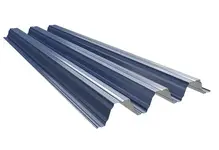Miladm2
Civil/Environmental
- Mar 28, 2013
- 5
Hi,
I'm designing a building in ETABS with a truss roof system, where TRP plates are placed on top of the trusses. To ensure the TRP plates do not carry any load from the truss structure, I set the membrane stiffness values (F11, F22, F12) to 0.001.
However, when designing the connections at the truss joints, I noticed that the member forces do not satisfy equilibrium conditions. After extensive checking, I found that the issue stems from the TRP plates: if I define an opening over the joint, the forces at that joint are in equilibrium. Without the opening, the TRP plates still show zero internal forces, but the equilibrium is not satisfied.
Has anyone encountered this issue before? Is there a recommended solution or modeling approach to resolve this? Any suggestions would be appreciated.
I'm designing a building in ETABS with a truss roof system, where TRP plates are placed on top of the trusses. To ensure the TRP plates do not carry any load from the truss structure, I set the membrane stiffness values (F11, F22, F12) to 0.001.
However, when designing the connections at the truss joints, I noticed that the member forces do not satisfy equilibrium conditions. After extensive checking, I found that the issue stems from the TRP plates: if I define an opening over the joint, the forces at that joint are in equilibrium. Without the opening, the TRP plates still show zero internal forces, but the equilibrium is not satisfied.
Has anyone encountered this issue before? Is there a recommended solution or modeling approach to resolve this? Any suggestions would be appreciated.

